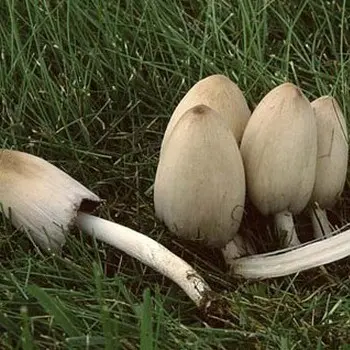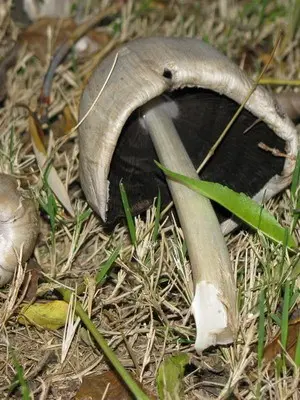 Category: conditionally edible.
Category: conditionally edible.
Hat (diameter 4-12 cm): grayish or slightly brown, brighter in the center. May be with numerous small dark scales. In young mushrooms, it has the shape of a small chicken egg, which eventually becomes like a bell. The edges are uneven, with small cracks.
Leg (height 7-22 cm): white, slightly brownish at the base. Usually curved, hollow.
Records: loose and frequent, white in color, eventually turning brown, and then black and spreading. Young mushrooms have a ring, but with age it disappears.
Pulp: thin, white, darkens strongly and quickly at the site of the cut or break. Has no pronounced odor.
In medieval Our Country, ink dung beetles were used to make ink, which was added to ordinary ones to protect important state documents from forgery: after drying, the spores of the fungus form a unique pattern.
Doubles: are absent.
The fungus dung beetle or gray dung beetle grows from mid-May to early October in the countries of the Eurasian continent with a temperate climate.
Where can I find: on manured soils, compost or manure heaps, or in humus-rich deciduous forests.
Eating: only young mushrooms can be boiled, marinated and fried.
Application in folk medicine (data not confirmed and not clinically tested!): Inky dung beetle is used as a remedy for drunkenness.
Important! The use of dung beetle along with alcohol causes poisoning, but remains harmless to non-drinkers.
A photo of a gray dung beetle is invited to see below:


Other names: gray ink mushroom.









